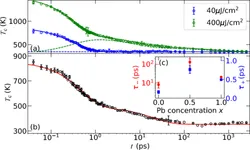Ultrafast & Terahertz Photonics: Publications
Filter by PI:
Filter by topic:
Terahertz probe for real time in vivo skin hydration evaluation
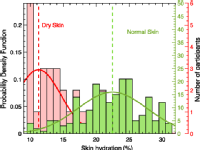
A.I. Hernandez-Serrano, X. Ding, J. Young, G. Costa, A. Dogra, J. Hardwicke and E. Pickwell-MacPherson
Advanced Photonics Nexus 3, 016012 (Feb 2024)
Simultaneous measurement of orthogonal terahertz fields via an emission multiplexing scheme

Huiliang Ou, Rayko Ivanov Stantchev, Xuequan Chen, Thierry Blu, Mykhaylo Semtsiv, William Ted Masselink, A. Hernandez Serrano, G. Costa, J. Young, N. Chopra, J. Lloyd-Hughes, and E. Pickwell-MacPherson
Optics Express 32, 5567 (Feb 2024)
Optimum Optical Designs for Diffraction-Limited Terahertz Spectroscopy and Imaging Systems Using Off-Axis Parabolic Mirrors
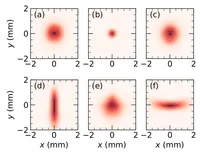
N. Chopra and J. Lloyd-Hughes
J Infrared Milli Terahz Waves 44, 981 (Nov 2023)
Terahertz Emission via Optical Rectification in a Metal-Free Perovskite Crystal

Nathaniel P. Gallop, Dumitru Sirbu, David Walker, James Lloyd-Hughes, Pablo Docampo and Rebecca L. Milot
ACS Photonics 10 4022, (October 2023)
High-bandwidth perovskite photonic sources on silicon
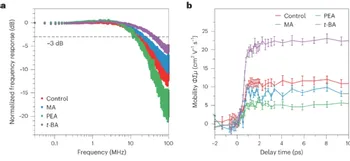
A. Ren, H. Wang, L. Dai, J. Xia, E. Butler-Caddle, J.A. Smith, ... S.A. Hindmarsh, A.M. Sanchez, J. Lloyd-Hughes, S. J Sweeney, ... and Wei Zhang
Nature Photonics 17, 798–805 (July 2023)
Resolving the Ultrafast Charge Carrier Dynamics of 2D and 3D Domains within a Mixed 2D/3D Lead-Tin Perovskite
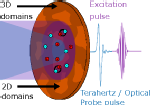
Jake D. Hutchinson, Edoardo Ruggeri, Jack M. Woolley, Géraud Delport, Samuel D. Stranks, Rebecca L. Milot
Advanced Functional Materials 2305736, (August 2023)
Spectroscopic insight on impact of environment on natural photoprotectants

A. Whittock, X. Ding, X. Ramirez Barker, N. Auckloo, R. Sellers, J.M. Woolley V. Krishnan, C. Marine, C. Corre, E. Pickwell-MacPherson and V.G. Stavros
Chem. Sci. 14, 6763 (June 2023)
Ultrafast THz spectroscopy of carbon nanotube-graphene composites
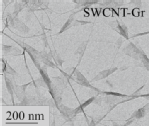
M.G. Burdanova, A.P. Tsapenko, S. Ahmad, E.I. Kauppinen and J. Lloyd-Hughes
Nanotechnology 34 405203 , (June 2023)
The 2023 terahertz science and technology roadmap

A. Leitenstorfer, ..., E. Pickwell-MacPherson, ... and J. Cunningham
J. Phys. D: Appl. Phys. 56, 223001 (April 2023)
Quantitative evaluation of transdermal drug delivery patches on human skin with in vivo THz-TDS
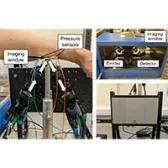
X. Ding, G. Costa, A. I. Hernandez-Serrano, R.I. Stantchev, G. Nurumbetov, D.M. Haddleton, and E. Pickwell-MacPherson
Bio. Opt. Express 14, 1146 (Feb 2023)
Active THz beam shaping using a one-dimensional array of photoconductive emitters
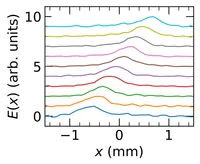
N. Chopra, J. Deveikis and J. Lloyd-Hughes
Appl. Phys. Lett. 122 061102 (Feb 2023)
Terahertz photoconductance dynamics of semiconductors from sub-nanosecond to millisecond timescales
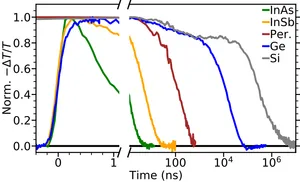
E. Butler-Caddle, N.E. Grant, S.L. Pain, J.D. Murphy, K.D.G.I. Jayawardena and J. Lloyd-Hughes
Appl. Phys. Lett. 122 012101 (Jan 2023)
Multi-pixel photoconductive emitters for the controllable generation of azimuthal and radial terahertz beams ("Editor's Pick")
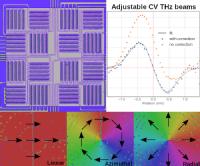
J. Deveikis and J. Lloyd-Hughes
Optics Express 30 43293 (Nov 2022)
Terahertz (THz) biophotonics technology: Instrumentation, techniques, and biomedical applications
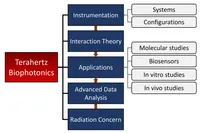
X. Chen, H. Lindley-Hatcher, R. I. Stantchev, J. Wang, K. Li, A. I. Hernandez-Serrano, Z. D. Taylor, E. Castro-Camus and E. Pickwell-MacPherson
Chem. Phys. Rev. 3, 011311 (June 2022)
Optimized multilayer structure for sensitive THz characterization of thin-film glucose solutions
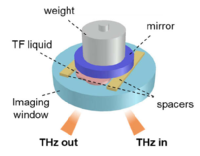
X. Ding, A. I. Hernandez-Serrano, H. Lindley-Hatcher, R. I. Stantchev, J. Zhou and E. Pickwell-MacPherson
Optics Express 30, 18079 (May 2022)
Simulated and Experimental Verification for a Terahertz Specific Finite Rate of Innovation Signal Processing Method
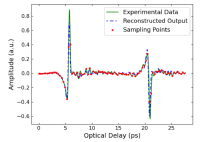
X. E. Ramirez Barker, R. I. Stantchev, A. I. Hernandez-Serrano and E. Pickwell-MacPherson
Sensors 22, 3387 (April 2022)
A Review of the Terahertz Conductivity and Photoconductivity of Carbon Nanotubes and Heteronanotubes
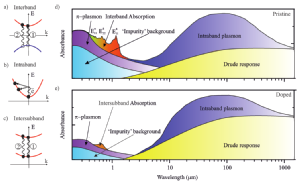
M.G. Burdanova, A.P. Tsapenko, M.V. Kharlamova, E.I. Kauppinen, B.P. Gorshunov, J. Kono and J. Lloyd-Hughes
Advanced Optical Materials 2101042 (Sept 2021)
Precise and accurate control of the ellipticity of THz radiation using a photoconductive pixel array
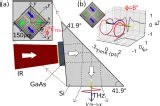
C.D.W. Mosley, J. Deveikis and J. Lloyd-Hughes
Appl. Phys. Lett. 119 121105 (Sep 2021)
The 2021 ultrafast spectroscopic probes of condensed matter roadmap
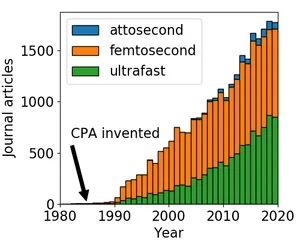
J. Lloyd-Hughes, P.M. Oppeneer, T. Pereira dos Santos, A. Schleife, S. Meng, M.A. Sentef, M. Ruggenthaler, A. Rubio, I. Radu, M. Murnane, X. Shi, H. Kapteyn, B. Stadtmüller, K.M. Dani, F.H. da Jornada, E. Prinz, M. Aeschlimann, R.L. Milot, M. Burdanova, J. Boland, T. Cocker and F. Hegmann
J. Phys.: Cond. Matt. 33 353001 (July 2021)
Hot electron cooling in InSb probed by ultrafast time-resolved terahertz cyclotron resonance
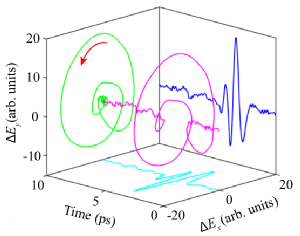
C.Q. Xia, M. Monti, J.L. Boland, L.M. Herz, J. Lloyd-Hughes, M.R. Filip and M.B. Johnston
Phys. Rev. B 103 245205 (June 2021)
Real time THz imaging—opportunities and challenges for skin cancer detection
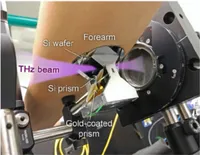
H. Lindley-Hatcher, R. I. Stantchev, X. Chen, A. I. Hernandez-Serrano, J. Hardwicke and E. Pickwell-MacPherson
Appl. Phys. Lett. 118, 230501 (June 2021)
Layered Perovskites in Solar Cells: Structure, Optoelectronic Properties, and Device Design
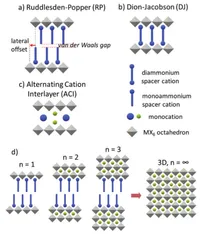
D. Sirbu, F. H. Balogun, R. L. Milot and P. Docampo
Advanced Energy Materials (May 2021)
Ultrafast, high modulation depth terahertz modulators based on carbon nanotube thin films

M.G. Burdanova, G.M. Katybab, R. Kashtiban, G.A. Komandin, E. Butler-Caddle, M. Staniforth, A.A. Mkrtchyan, D.V. Krasnikov, Y.G. Gladush, J.Sloan, A.G. Nasibulin and J. Lloyd-Hughes
Carbon 173 245 (Mar 2021)
Evaluation of in vivo THz sensing for assessing human skin hydration
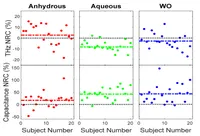
H. Lindley-Hatcher, A. I. Hernandez-Serrano, J. Wang, J. Cebrian, J. Hardwicke and E. Pickwell-MacPherson
J. Phys. Photonics 3, 014001 (December 2020)
Nanotechnology for catalysis and solar energy conversion
U. Banin, N. Waiskopf, L. Hammarström, G. Boschloo, M. Freitag, E.M.J. Johansson, J. Sá, H. Tian, M.B. Johnston, L.M. Herz
Metal composition influences optoelectronic quality in mixed-metal lead-tin triiodide perovskite solar absorbers
M. T. Klug, R. L. Milot, J.B. Patel, T. Green, H. C. Sansom, M. D. Farrar, A. J. Ramadan, S. Martani, Z. Wang, B. Wenger, J. M. Ball, L. Langshaw, A. Petrozza, M. B. Johnston, L. M. Herz and H. J. Snaith
Energy & Environmental Science (May 2020)
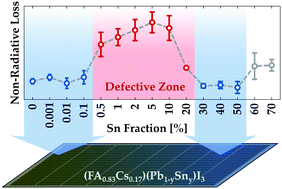
Ultrafast Optoelectronic Processes in 1D Radial van der Waals Heterostructures: Carbon, Boron Nitride, and MoS2 Nanotubes with Coexisting Excitons and Highly Mobile Charges
M.G. Burdanova, R.J. Kashtiban, Y. Zheng, R. Xiang, S. Chiashi, J.M. Woolley, M. Staniforth, E. Sakamoto-Rablah, X. Xie, M. Broome, J. Sloan, A. Anisimov, E.I. Kauppinen, S. Maruyama and J. Lloyd-Hughes
Nano Lett. 20 5, 3560 (Apr 2020) [ free e-print ] [ preprint pdf ] [ ref ]
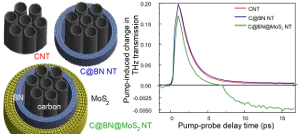 Heterostructures built from 2D, atomically thin crystals are bound by the van der Waals force and exhibit unique optoelectronic properties. Here, we report the structure, composition and optoelectronic properties of 1D van der Waals heterostructures comprising carbon nanotubes wrapped by atomically thin nanotubes of boron nitride and molybdenum disulfide (MoS2). The high quality of the composite was directly made evident on the atomic scale by transmission electron microscopy, and on the macroscopic scale by a study of the heterostructure’s equilibrium and ultrafast optoelectronics. Ultrafast pump–probe spectroscopy across the visible and terahertz frequency ranges identified that, in the MoS2 nanotubes, excitons coexisted with a prominent population of free charges. The electron mobility was comparable to that found in high-quality atomically thin crystals. The high mobility of the MoS2 nanotubes highlights the potential of 1D van der Waals heterostructures for nanoscale optoelectronic devices.
Heterostructures built from 2D, atomically thin crystals are bound by the van der Waals force and exhibit unique optoelectronic properties. Here, we report the structure, composition and optoelectronic properties of 1D van der Waals heterostructures comprising carbon nanotubes wrapped by atomically thin nanotubes of boron nitride and molybdenum disulfide (MoS2). The high quality of the composite was directly made evident on the atomic scale by transmission electron microscopy, and on the macroscopic scale by a study of the heterostructure’s equilibrium and ultrafast optoelectronics. Ultrafast pump–probe spectroscopy across the visible and terahertz frequency ranges identified that, in the MoS2 nanotubes, excitons coexisted with a prominent population of free charges. The electron mobility was comparable to that found in high-quality atomically thin crystals. The high mobility of the MoS2 nanotubes highlights the potential of 1D van der Waals heterostructures for nanoscale optoelectronic devices.
Broadband amplitude, frequency, and polarization splitter for terahertz frequencies using parallel-plate waveguide technology
A. I Hernandez-Serrano, D. M. Mittleman and E. Pickwell-MacPherson
Optics Letters 45 1208 (Feb 2020) [ pdf ] [ ref ]
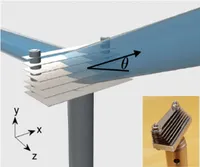 In this Letter, we report a broadband frequency/polarization demultiplexer based on parallel-plate waveguides (PPWGs) for terahertz (THz) frequencies. The fabrication and experimental validation of this polarization sensitive demultiplexer is demonstrated for the range from 0.2 to 1 THz. Upgrading the demultiplexer by adding a second demultiplexer stage, a fifty-fifty amplitude splitter is also demonstrated in the same frequency range. The multiplexer is based on a stainless-steel traveling-wave antenna, exhibiting strong mechanical robustness. This unique device exhibits three splitting mechanisms in the same device: amplitude, polarization, and frequency splitting. This is a significant improvement for the next generation of THz passive components for communication purposes.
In this Letter, we report a broadband frequency/polarization demultiplexer based on parallel-plate waveguides (PPWGs) for terahertz (THz) frequencies. The fabrication and experimental validation of this polarization sensitive demultiplexer is demonstrated for the range from 0.2 to 1 THz. Upgrading the demultiplexer by adding a second demultiplexer stage, a fifty-fifty amplitude splitter is also demonstrated in the same frequency range. The multiplexer is based on a stainless-steel traveling-wave antenna, exhibiting strong mechanical robustness. This unique device exhibits three splitting mechanisms in the same device: amplitude, polarization, and frequency splitting. This is a significant improvement for the next generation of THz passive components for communication purposes.
Landau polaritons in highly nonparabolic two-dimensional gases in the ultrastrong coupling regime
J. Keller, G. Scalari, F. Appugliese, S. Rajabali, M. Beck, J. Haase, C.A. Lehner, W. Wegscheider, M. Failla, M. Myronov, D.R. Leadley, J. Lloyd-Hughes, P. Nataf, and J. Faist
Physical Review B 101:075301 (Feb 2020) [ pdf ][ ref ]
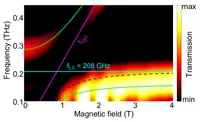 We probe ultrastrong light-matter coupling between metallic terahertz metasurfaces and Landau-level transitions in high-mobility two-dimensional electron and hole gases. We utilize heavy-hole cyclotron resonances in strained Ge and electron cyclotron resonances in InSb quantum wells, both within highly nonparabolic bands, and compare our results to well-known parabolic AlGaAs/GaAs quantum well systems. Tuning the coupling strength of the system by two methods, lithographically and by optical pumping, we observe a behavior clearly deviating from the standard Hopfield model previously verified in cavity quantum electrodynamics: an opening of a lower polaritonic gap.
We probe ultrastrong light-matter coupling between metallic terahertz metasurfaces and Landau-level transitions in high-mobility two-dimensional electron and hole gases. We utilize heavy-hole cyclotron resonances in strained Ge and electron cyclotron resonances in InSb quantum wells, both within highly nonparabolic bands, and compare our results to well-known parabolic AlGaAs/GaAs quantum well systems. Tuning the coupling strength of the system by two methods, lithographically and by optical pumping, we observe a behavior clearly deviating from the standard Hopfield model previously verified in cavity quantum electrodynamics: an opening of a lower polaritonic gap.
Approaching the Shockley-Queisser limit for fill factors in lead–tin mixed perovskite photovoltaics
K.D.G.I. Jayawardena, R.M.I. Bandara, M. Monti, E. Butler-Caddle, T. Pichler, H. Shiozawa, Z. Wang, S. Jenatsch, S.J. Hinder, M.G. Masteghin, M. Patel, H.M. Thirimanne, W. Zhang, R.A. Sporea, J. Lloyd-Hughes and S. R. P. Silva
J. Mater. Chem. A 8 693 (Jan 2020) [ pdf ] [ ref ]
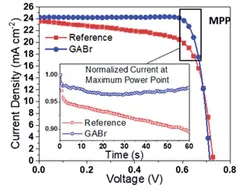 The performance of all solar cells is dictated by charge recombination. A closer to ideal recombination dynamics results in improved performances, with fill factors approaching the limits based on Shockley-Queisser analysis. It is well known that for emerging solar materials such as perovskites, there are several challenges that need to be overcome to achieve high fill factors, particularly for large area lead-tin mixed perovskite solar cells. Here we demonstrate a strategy towards achieving fill factors above 80% through post-treatment of a lead-tin mixed perovskite absorber with guanidinium bromide for devices with an active area of 0.43 cm2. This bromide post-treatment results in a more favourable band alignment at the anode and cathode interfaces, enabling better bipolar extraction. The resulting devices demonstrate an exceptional fill factor of 83%, approaching the Shockley–Queisser limit, resulting in a power conversion efficiency of 14.4% for large area devices.
The performance of all solar cells is dictated by charge recombination. A closer to ideal recombination dynamics results in improved performances, with fill factors approaching the limits based on Shockley-Queisser analysis. It is well known that for emerging solar materials such as perovskites, there are several challenges that need to be overcome to achieve high fill factors, particularly for large area lead-tin mixed perovskite solar cells. Here we demonstrate a strategy towards achieving fill factors above 80% through post-treatment of a lead-tin mixed perovskite absorber with guanidinium bromide for devices with an active area of 0.43 cm2. This bromide post-treatment results in a more favourable band alignment at the anode and cathode interfaces, enabling better bipolar extraction. The resulting devices demonstrate an exceptional fill factor of 83%, approaching the Shockley–Queisser limit, resulting in a power conversion efficiency of 14.4% for large area devices.
A Robust Protocol for In Vivo THz Skin Measurements
H. Lindley-Hatcher, A. I Hernandez-Serrano, Q. Sun, J. Wang, J. Cebrian, L. Blasco, E. Pickwell-MacPherson
J Infrared Milli Terahz Waves 40 980 (August 2019) [ pdf ] [ ref ]
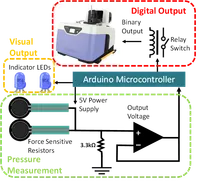 This work presents an experimental setup to control the way in which pressure interferes with the repeatability of in vivo THz skin measurements. By integrating a pressure sensor circuit into our THz system, it is possible to identify which measurements were taken within a previously specified pressure range. The live response of the pressure sensor helps to acquire data within the desired pressure leading to greater consistency of data between measurements. Additionally, a protocol is proposed to help achieve repeatable results and to remove the effects of the natural variation of the skin through the course of the day. This technique has been shown to be able to quantify the changes induced in the skin following the application of a moisturising skin product and shows the measured result to be significantly different from natural skin variation. This research therefore prepares the way for further studies on the effectiveness of different skin products using in vivo THz measurements.
This work presents an experimental setup to control the way in which pressure interferes with the repeatability of in vivo THz skin measurements. By integrating a pressure sensor circuit into our THz system, it is possible to identify which measurements were taken within a previously specified pressure range. The live response of the pressure sensor helps to acquire data within the desired pressure leading to greater consistency of data between measurements. Additionally, a protocol is proposed to help achieve repeatable results and to remove the effects of the natural variation of the skin through the course of the day. This technique has been shown to be able to quantify the changes induced in the skin following the application of a moisturising skin product and shows the measured result to be significantly different from natural skin variation. This research therefore prepares the way for further studies on the effectiveness of different skin products using in vivo THz measurements.
Utilizing multilayer structures to enhance terahertz characterization of thin films ranging from aqueous solutions to histology slides
Q. Sun, K. Liu, X. Chen, X. Liu, A. I Hernandez-Serrano, E. Pickwell-MacPherson
Optics Letters 44 2149 (April 2019) [ pdf ] [ ref ]
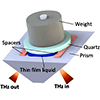 We propose a multilayer geometry to characterize thin-film samples in reflection terahertz time domain spectroscopy. Theory indicates that this geometry has higher sensitivity compared to ordinary transmission or reflection geometries when characterizing both low- and high-absorption samples. Pure water and water–ethanol mixtures are measured to verify the characterization accuracy of the proposed geometry and its capability to measure trace liquids. Paraffin-embedded oral cancer tissue is imaged to further show how the proposed geometry enhances the sensitivity for solid low-absorptive films.
We propose a multilayer geometry to characterize thin-film samples in reflection terahertz time domain spectroscopy. Theory indicates that this geometry has higher sensitivity compared to ordinary transmission or reflection geometries when characterizing both low- and high-absorption samples. Pure water and water–ethanol mixtures are measured to verify the characterization accuracy of the proposed geometry and its capability to measure trace liquids. Paraffin-embedded oral cancer tissue is imaged to further show how the proposed geometry enhances the sensitivity for solid low-absorptive films.
Giant negative terahertz photoconductivity in controllably doped carbon nanotube networks
M.G. Burdanova, A.P. Tsapenko, D.A. Satco, R.J. Kashtiban, C.D.W. Mosley, M. Monti, M. Staniforth, J. Sloan, Y. Gladush, A.G. Nasibulin and J. Lloyd-Hughes
ACS Photonics 6 1058 (Mar 2019) [ preprint pdf ] [ supplemental info ] [ ref ]
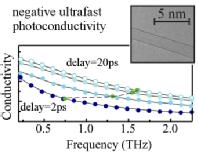 A strong negative photoconductivity was identified in thin film networks of single-walled carbon nanotubes using optical pump, THz probe spectroscopy. The films were controllably doped, using either adsorption doping with different p-type dopant concentrations, or ambipolar doping using an ionic gate. While doping enhanced the THz conductivity and increased the momentum scattering rate, interband photoexcitation lowered the spectral weight and reduced the momentum scattering rate. This negative THz photoconductivity was observed for all doping levels, regardless of the chemical potential, and decayed within a few picoseconds. The strong many-body interactions inherent to these 1D conductors led to trion formation under photoexcitation, lowering the overall conductivity of the carbon nanotube network. The large amplitude of negative THz photoconductivity and the tunability of its recovery time with doping offer promise for spectrally wide-band ultrafast devices including THz detectors, polarizers and modulators.
A strong negative photoconductivity was identified in thin film networks of single-walled carbon nanotubes using optical pump, THz probe spectroscopy. The films were controllably doped, using either adsorption doping with different p-type dopant concentrations, or ambipolar doping using an ionic gate. While doping enhanced the THz conductivity and increased the momentum scattering rate, interband photoexcitation lowered the spectral weight and reduced the momentum scattering rate. This negative THz photoconductivity was observed for all doping levels, regardless of the chemical potential, and decayed within a few picoseconds. The strong many-body interactions inherent to these 1D conductors led to trion formation under photoexcitation, lowering the overall conductivity of the carbon nanotube network. The large amplitude of negative THz photoconductivity and the tunability of its recovery time with doping offer promise for spectrally wide-band ultrafast devices including THz detectors, polarizers and modulators.
The Effects of Doping Density and Temperature on the Optoelectronic Properties of Formamidinium Tin Triiodide Thin Films
R. L. Milot, M. T. Klug, C. L. Davies, Z. Wang, H. Kraus, H. J. Snaith, M. B. Johnston, and L. M. Herz
Advanced Materials (Sept 2018) [ pdf ] [ ref ]
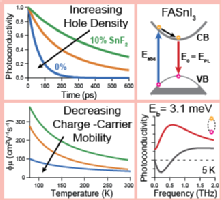 Optoelectronic properties are unraveled for formamidinium tin triiodide (FASnI3) thin films, whose background hole doping density is varied through SnF2 addition during film fabrication. Monomolecular charge‐carrier recombination exhibits both a dopant‐mediated part that grows linearly with hole doping density and remnant contributions that remain under tin‐enriched processing conditions. At hole densities near 1020 cm−3, a strong Burstein–Moss effect increases absorption onset energies by ≈300 meV beyond the bandgap energy of undoped FASnI3 (shown to be 1.2 eV at 5 K and 1.35 eV at room temperature). At very high doping densities (1020 cm−3), temperature‐dependent measurements indicate that the effective charge‐carrier mobility is suppressed through scattering with ionized dopants. Once the background hole concentration is nearer 1019 cm−3 and below, the charge‐carrier mobility increases with decreasing temperature according to ≈T−1.2, suggesting that it is limited mostly by intrinsic interactions with lattice vibrations. For the lowest doping concentration of 7.2 × 1018 cm−3, charge‐carrier mobilities reach a value of 67 cm2 V−1 s−1 at room temperature and 470 cm2 V−1 s−1 at 50 K. Intraexcitonic transitions observed in the THz‐frequency photoconductivity spectra at 5 K reveal an exciton binding energy of only 3.1 meV for FASnI3, in agreement with the low bandgap energy exhibited by this perovskite.
Optoelectronic properties are unraveled for formamidinium tin triiodide (FASnI3) thin films, whose background hole doping density is varied through SnF2 addition during film fabrication. Monomolecular charge‐carrier recombination exhibits both a dopant‐mediated part that grows linearly with hole doping density and remnant contributions that remain under tin‐enriched processing conditions. At hole densities near 1020 cm−3, a strong Burstein–Moss effect increases absorption onset energies by ≈300 meV beyond the bandgap energy of undoped FASnI3 (shown to be 1.2 eV at 5 K and 1.35 eV at room temperature). At very high doping densities (1020 cm−3), temperature‐dependent measurements indicate that the effective charge‐carrier mobility is suppressed through scattering with ionized dopants. Once the background hole concentration is nearer 1019 cm−3 and below, the charge‐carrier mobility increases with decreasing temperature according to ≈T−1.2, suggesting that it is limited mostly by intrinsic interactions with lattice vibrations. For the lowest doping concentration of 7.2 × 1018 cm−3, charge‐carrier mobilities reach a value of 67 cm2 V−1 s−1 at room temperature and 470 cm2 V−1 s−1 at 50 K. Intraexcitonic transitions observed in the THz‐frequency photoconductivity spectra at 5 K reveal an exciton binding energy of only 3.1 meV for FASnI3, in agreement with the low bandgap energy exhibited by this perovskite.
Efficient Intraband Hot Carrier Relaxation in the Perovskite Semiconductor Cs1-xRbxSnI3 Mediated by Strong Electron-Phonon Coupling
M. Monti, S. Tao, M. Staniforth, A. Crocker, E. Griffin, A. Wijesekara, R.A. Hatton, and J. Lloyd-Hughes
J. Phys. Chem. C 122 20669 (Aug 2018) [ pdf ] [ ref ]
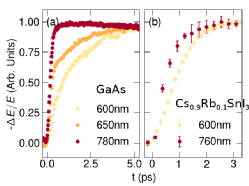 The dynamic increase in THz photoconductivity resulting from energetic intraband relaxation was used to track the formation of highly mobile charges in thin films of the tin iodide perovskite Cs1-xRbxSnI3, with x=0 and x=0.1. Energy relaxation times were found to be around 500fs, comparable to those in the prototypical inorganic semiconductor GaAs. At low excess energies the efficient intraband energy relaxation in the lowest conduction and valence bands of Cs1-xRbxSnI3 can be understood within the context of the Fröhlich electron-phonon interaction, with a strong coupling strength. For higher excess energies the photoconductivity rise time lengthens in accordance with carrier injection into multiple bands, identified by quantitative first-principles bandstructure calculations and photoluminescence spectroscopy. The findings contribute to the development of design rules for photovoltaic devices capable of extracting hot carriers from perovskite semiconductors.
The dynamic increase in THz photoconductivity resulting from energetic intraband relaxation was used to track the formation of highly mobile charges in thin films of the tin iodide perovskite Cs1-xRbxSnI3, with x=0 and x=0.1. Energy relaxation times were found to be around 500fs, comparable to those in the prototypical inorganic semiconductor GaAs. At low excess energies the efficient intraband energy relaxation in the lowest conduction and valence bands of Cs1-xRbxSnI3 can be understood within the context of the Fröhlich electron-phonon interaction, with a strong coupling strength. For higher excess energies the photoconductivity rise time lengthens in accordance with carrier injection into multiple bands, identified by quantitative first-principles bandstructure calculations and photoluminescence spectroscopy. The findings contribute to the development of design rules for photovoltaic devices capable of extracting hot carriers from perovskite semiconductors.
Highly Sensitive Terahertz Thin-Film Total Internal Reflection Spectroscopy Reveals in Situ Photoinduced Structural Changes in Methylammonium Lead Halide Perovskites
Q. Sun, X. Liu, J. Cao, R.I. Stantchev, Y. Zhou, X. Chen, E.P.J. Parrott, J. Lloyd-Hughes, N. Zhao, and E. Pickwell-MacPherson
J. Phys. Chem. C 122 17552 (June 2018) [ pdf ] [ ref ]
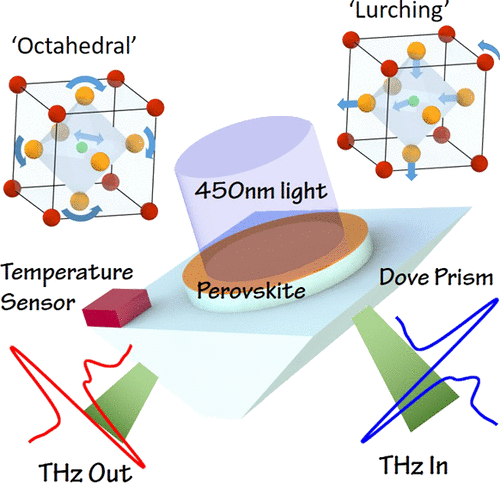
Terahertz (THz) thin-film total internal reflection (TF-TIR) spectroscopy is shown to have an enhanced sensitivity to the vibrational properties of thin films in comparison with standard THz transmission spectroscopy. This increased sensitivity was used to track photoinduced modifications to the structure of thin films of methylammonium (MA) lead halide, MAPbI3–xBrx (x = 0, 0.5, 1, and 3). Initially, illumination strengthened the phonon modes around 2 THz, associated with Pb–I stretch modes coupled to the MA ions, whereas the 1 THz twist modes of the inorganic octahedra did not alter in strength. Under longer term illumination, the 1 THz phonon modes of encapsulated films slowly reduced in strength, whereas in films exposed to moisture and oxygen, these phonons weaken more rapidly and blue-shift in frequency. The rapid monitoring of environmentally induced changes to the vibrational modes afforded by TF-TIR spectroscopy offers applications in the characterization and quality control of the perovskite thin-film solar cells and other thin-film semiconductors.
Conduction properties of thin films from a water soluble carbon nanotube/hemicellulose complex
D. Shao, P. Yotprayoonsak, V. Saunajoki, M. Ahlskog, J. Virtanen, V. Kangas, A. Volodin, C. Van Haesendonck, M. Burdanova, C. D. W. Mosley and J. Lloyd-Hughes
Nanotechnology 29 145203 (Feb 2018) [ pdf ] [ ref ]
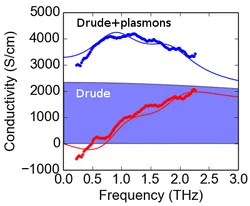 We have examined the conductive properties of a carbon nanotube (CNT) based thin film, which were prepared via dispersion in water by non-covalent functionalization of the nanotubes with xylan, a type of hemicellulose. Measurements of low temperature conductivity, Kelvin Probe Force Microscopy, and high frequency (THz) conductivity elucidated the intra-tube and inter-tube charge transport processes in this material. The measurements show excellent conductive properties of the as prepared thin films, with bulk conductivity up to 2000 S/cm. The transport results demonstrate that the hemicellulose does not seriously interfere with the inter-tube conductance.
We have examined the conductive properties of a carbon nanotube (CNT) based thin film, which were prepared via dispersion in water by non-covalent functionalization of the nanotubes with xylan, a type of hemicellulose. Measurements of low temperature conductivity, Kelvin Probe Force Microscopy, and high frequency (THz) conductivity elucidated the intra-tube and inter-tube charge transport processes in this material. The measurements show excellent conductive properties of the as prepared thin films, with bulk conductivity up to 2000 S/cm. The transport results demonstrate that the hemicellulose does not seriously interfere with the inter-tube conductance.
Tracking a hysteretic and disorder-broadened phase transition via the electromagnon response in improper ferroelectrics
C. D. W. Mosley, D. Prabhakaran and J. Lloyd-Hughes
J. Phys. D: Applied Physics 51 084002 (Jan 2018) [ pdf ][ ref ]
We demonstrate that 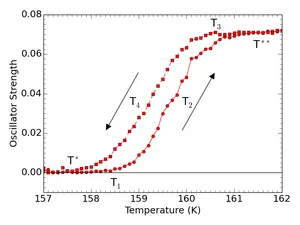 electromagnons can be used to directly probe the nature of a phase transition between magnetically ordered phases in an improper ferroelectric. The antiferromagnetic/paraelectric to antiferromagnet/ferroelectric phase transition in Cu1-xZnxO (x = 0, 0.05) alloys was tracked via the electromagnon response using terahertz time-domain spectroscopy, on heating and cooling through the phase transition. The transition was found to exhibit thermal hysteresis, confirming its first-order nature, and to broaden under the influence of spin-disorder upon Zn substitution. The energy of the electromagnon increases upon alloying, as a result of the non-magnetic ions modifying the magnetic interactions that give rise to the multiferroic phase and electromagnons. We describe our findings in the context of recent theoretical work that examined improper ferroelectricity and electromagnons in CuO from phenomenological and first-principles approaches.
electromagnons can be used to directly probe the nature of a phase transition between magnetically ordered phases in an improper ferroelectric. The antiferromagnetic/paraelectric to antiferromagnet/ferroelectric phase transition in Cu1-xZnxO (x = 0, 0.05) alloys was tracked via the electromagnon response using terahertz time-domain spectroscopy, on heating and cooling through the phase transition. The transition was found to exhibit thermal hysteresis, confirming its first-order nature, and to broaden under the influence of spin-disorder upon Zn substitution. The energy of the electromagnon increases upon alloying, as a result of the non-magnetic ions modifying the magnetic interactions that give rise to the multiferroic phase and electromagnons. We describe our findings in the context of recent theoretical work that examined improper ferroelectricity and electromagnons in CuO from phenomenological and first-principles approaches.
Terahertz spectroscopy of anisotropic materials using beams with rotatable polarization
C. D. W. Mosley, M. Failla, D. Prabhakaran and J. Lloyd-Hughes
Scientific Reports 7:12337 (Sept 2017) [ pdf ][ ref ]
We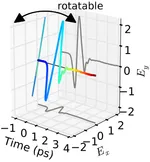 introduce a polarization-resolved terahertz time-domain spectrometer with a broadband (0.3-2.5THz), rotatable THz polarization state, and which exhibits minimal change in the electric field amplitude and polarization state upon rotation. This was achieved by rotating an interdigitated photoconductive emitter, and by detecting the orthogonal components of the generated THz pulse via electro-optic sampling. The high precision (<0.1°) and accuracy (<1.0°) of this approach is beneficial for the study of anisotropic materials without rotating the sample, which can be impractical, for instance for samples held in a cryostat. The versatility of this method was demonstrated by studying the anisotropic THz optical properties of uniaxial and biaxial oxide crystals. For uniaxial ZnO and LaAlO3, which have minimal THz absorption across the measurement bandwidth, the orientations of the eigenmodes of propagation were conveniently identified as the orientation angles that produced a transmitted THz pulse with zero ellipticity, and the birefringence was quantified. In CuO, a multiferroic with improper ferroelectricity, the anisotropic THz absorption created by an electromagnon was investigated, mapping its selection rule precisely. For this biaxial crystal, which has phonon and electromagnon absorption, the polarization eigenvectors exhibited chromatic dispersion, as a result of the monoclinic crystal structure and the frequency-dependent complex refractive index.
introduce a polarization-resolved terahertz time-domain spectrometer with a broadband (0.3-2.5THz), rotatable THz polarization state, and which exhibits minimal change in the electric field amplitude and polarization state upon rotation. This was achieved by rotating an interdigitated photoconductive emitter, and by detecting the orthogonal components of the generated THz pulse via electro-optic sampling. The high precision (<0.1°) and accuracy (<1.0°) of this approach is beneficial for the study of anisotropic materials without rotating the sample, which can be impractical, for instance for samples held in a cryostat. The versatility of this method was demonstrated by studying the anisotropic THz optical properties of uniaxial and biaxial oxide crystals. For uniaxial ZnO and LaAlO3, which have minimal THz absorption across the measurement bandwidth, the orientations of the eigenmodes of propagation were conveniently identified as the orientation angles that produced a transmitted THz pulse with zero ellipticity, and the birefringence was quantified. In CuO, a multiferroic with improper ferroelectricity, the anisotropic THz absorption created by an electromagnon was investigated, mapping its selection rule precisely. For this biaxial crystal, which has phonon and electromagnon absorption, the polarization eigenvectors exhibited chromatic dispersion, as a result of the monoclinic crystal structure and the frequency-dependent complex refractive index.
Colossal terahertz magnetoresistance at room temperature in epitaxial La0.7Sr0.3MnO3 nanocomposites and single-phase thin films
J. Lloyd-Hughes, C. D. W. Mosley, S. P. P. Jones, M. R. Lees, A. Chen, Q. X. Jia, E. M. Choi and J. L. MacManus-Driscoll
Nano Lett. 17:2506 (Mar 2017) [ pdf ][ ref ]
We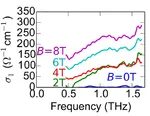 show that colossal magnetoresistance persists up to THz frequencies, in manganite nanocomposites and thin films. At the metal-insulator transition the THz conductivity of the nanocolumn film was dramatically enhanced by the application of a magnetic field, creating a non-Drude conductivity that increased with frequency. Surprisingly, the observed colossal THz magnetoresistance is large for ac motion on nanometre length scales, even when the dc magnetoresistance on macroscopic length scales is negligible.
show that colossal magnetoresistance persists up to THz frequencies, in manganite nanocomposites and thin films. At the metal-insulator transition the THz conductivity of the nanocolumn film was dramatically enhanced by the application of a magnetic field, creating a non-Drude conductivity that increased with frequency. Surprisingly, the observed colossal THz magnetoresistance is large for ac motion on nanometre length scales, even when the dc magnetoresistance on macroscopic length scales is negligible.
Papers from 2016 (JLH only)
- Terahertz quantum Hall effect for spin-split heavy-hole gases in strained Ge quantum wellsLink opens in a new window
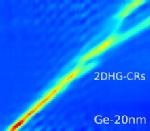
M. Failla, J. Keller, G. Scalari, C. Maissen, J. Faist, C. Reichl, W. Wegscheider, O. J. Newell, D. R. Leadley, M. Myronov, J. Lloyd-Hughes
New J. Phys. 18:113036 (Nov 2016) [ pdfLink opens in a new window ][ ref ]
Spin-split heavy-hole gases in strained germanium quantum wells were characterized by polarisation-resolved terahertz time-domain spectroscopy. Effective masses, carrier densities, g-factors, transport lifetimes, mobilities and Rashba spin-splitting energies were evaluated, giving quantitative insights into the influence of strain. The Rashba coefficient was found to lower for samples with higher biaxial compressive strain, while heavy-hole mobilities were enhanced to over 1.5x106cm2V−1s−1 at 3 K. This high mobility enabled the observation of the optical quantum Hall effect at terahertz frequencies for spin-split two-dimensional heavy-holes, evidenced as plateaux in the transverse magnetoconductivity at even and odd filling factors.
Papers from 2015 (JLH only)
- Narrow heavy-hole cyclotron resonances split by the cubic Rashba spin-orbit interaction in strained germanium quantum wells
-

M. Failla, M. Myronov, C. Morrison, D. R. Leadley, and J. Lloyd-Hughes
Physical Review B, 92:045303 (July 2015) [ pdf ][ supplemental info ][ ref ]
The spin-orbit interaction was found to split the cyclotron resonance of heavy holes confined in high-mobility, compressively strained germanium quantum wells. The interference between coherent spin-split cyclotron resonances was tracked on picosecond time scales using terahertz time-domain spectroscopy. Analysis in the time domain, or using a time-frequency decomposition based on the Gabor-Morlet wavelet, was necessary when the difference between cyclotron frequencies was comparable to the linewidth. The cubic Rashba spin-orbit coefficient β was determined via two methods: (i) the magnetic-field dependence of the cyclotron frequencies, and (ii) the spin-resolved subband densities. An enhanced β and spin polarization was created by tailoring the strain to enhance the spin-orbit interaction. The amplitude modulation of the narrow, interfering cyclotron resonances is a signature of spin coherences persisting for more than 10 ps.
- Interfacial and bulk polaron masses in Zn1-xMgxO/ZnO heterostructures examined by terahertz time-domain cyclotron spectroscopy
-
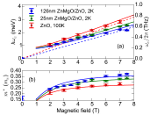
J. Lloyd-Hughes, M. Failla, J. Ye, S.P.P. Jones, K.L. Teo, and C. Jagadish
Appl. Phys. Lett. 106:202103 (May 2015) [ pdf ][ ref ]
The cyclotron resonance of polarons in Zn1-xMgxO/ZnO heterostructures (with 0.15<x<0.22) was studied by terahertz time-domain spectroscopy. Low-temperature magnetoconductivity spectra of the 2D electron gas at the Zn1-xMgxO/ZnO interface determined the polaron density, mass, and scattering rate. The cyclotron mass of 2D polarons was found to increase significantly with magnetic field B from 0.24me at B=2T to 0.37me at B=7.5T. A nonlinear cyclotron frequency with B was also observed for 3D polarons in ZnO. The findings are discussed in the context of polaron mass renormalization driven by the electron-LO-phonon and electron-acoustic phonon interactions.
- Structural, optical and vibrational properties of self-assembled Pbn+1(Ti1-xFex)nO3n+1-δ Ruddlesden-Popper superstructures
-
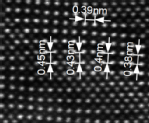
K. I. Doig, J. J. P. Peters, S. Nawaz, D. Walker, M. Walker, M. R. Lees, R. Beanland, A. M. Sanchez, C. F. McConville, V. R. Palkar, J. Lloyd-Hughes
Scientific Reports, 5:7719 (Jan 2015) [ pdf ][ Supp. Info. ][ ref ]
Bulk crystals and thin films of PbTi1−xFexO3−δ (PTFO) are multiferroic, exhibiting ferroelectricity and ferromagnetism at room temperature. Here we report that the Ruddlesden-Popper phase Pbn+1(Ti1-xFex)nO3n+1-δ forms spontaneously during pulsed laser deposition of PTFO on LaAlO3 substrates. High-resolution transmission electron microscopy, x-ray diffraction and x-ray photoemission spectroscopy were utilised to perform a structural and compositional analysis, demonstrating that n~8 and x~0.5. The complex dielectric function of the films was determined from far-infrared to ultraviolet energies using a combination of terahertz time-domain spectroscopy, Fourier transform spectroscopy, and spectroscopic ellipsometry. The simultaneous Raman and infrared activity of phonon modes and the observation of second harmonic generation establishes a non-centrosymmetric point group for Pbn+1(Ti0.5Fe0.5)nO3n+1−δ, a prerequisite for (but not proof of) ferroelectricity. No evidence of macroscopic ferromagnetism was found in SQUID magnetometry. The ultrafast optical response exhibited coherent magnon oscillations compatible with local magnetic order, and additionally was used to study photocarrier cooling on picosecond timescales. An optical gap smaller than that of BiFeO3 and long photocarrier lifetimes may make this system interesting as a ferroelectric photovoltaic.
Papers from 2014 (JLH only)
- Terahertz spectroscopy of quantum 2D electron systems
-
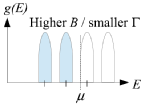
J. Lloyd-Hughes
J. Phys. D: Appl. Phys., 47:374006 (Sept 2014) [ pdf ][ ref ]
Terahertz time-domain spectroscopy permits the coherent motion of charges to be examined in a diverse range of two-dimensional semiconductor heterostructures. Studies of the THz conductivity and magnetoconductivity of two-dimensional quantum systems are reviewed, including cyclotron resonance spectroscopy and the transverse conductivity in the Hall and quantum Hall regimes. Experiments are described that demonstrate quantum phenomena at THz frequencies, principally coherent control and enhanced light–matter coupling in electromagnetic cavities.
- Influence of nonmagnetic Zn substitution on the lattice and magnetoelectric dynamical properties of the multiferroic material CuO
-
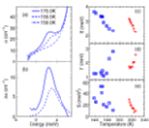
S.P.P. Jones, N.C. Wurz, M. Failla, D. Prabhakaran, C.F. McConville, J. Lloyd-Hughes
Phys. Rev. B, 90:064405 (Aug 2014) [ pdf ][ ref ]
Electromagnons were observed in the high-temperature multiferroic CuO even after Zn substitution disturbed the spin structure. The results demonstrate that electromagnons and dynamic magnetoelectric coupling can be maintained in disordered spin systems. Further, the dynamic lattice response of CuZnO was investigated by Raman and Fourier-transform spectroscopy, and was used to show strong spin-phonon coupling in both the antiferromagnetic low-temperature phase and the intermediate-temperature multiferroic phase.
- High-temperature electromagnons in the magnetically induced multiferroic cupric oxide driven by intersublattice exchange
-
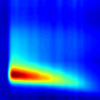
S.P.P. Jones, S.M. Gaw, K.I. Doig, D. Prabhakaran, E.M. Hétroy Wheeler, A.T. Boothroyd, J. Lloyd-Hughes
Nat. Commun., 5:3787 (Apr 2014) [ pdf with Supp. Info. ][ ref ]
Magnetically induced ferroelectric multiferroics present an exciting new paradigm in the design of multifunctional materials, by intimately coupling magnetic and polar order. Magnetoelectricity creates a novel quasiparticle excitation - the electromagnon - at terahertz frequencies, with spectral signatures that unveil important spin interactions. To date, electromagnons have been discovered at low temperature (<70K) and predominantly in rare-earth compounds such as RMnO3. Here we demonstrate using terahertz time-domain spectroscopy that intersublattice exchange in the improper multiferroic cupric oxide (CuO) creates electromagnons at substantially elevated temperatures (213-230K). Dynamic magnetoelectric coupling can therefore be achieved in materials, such as CuO, that exhibit minimal static cross-coupling. The electromagnon strength and energy track the static polarization, highlighting the importance of the underlying cycloidal spin structure. Polarized neutron scattering and terahertz spectroscopy identify a magnon in the antiferromagnetic ground state, with a temperature dependence that suggests a significant role for biquadratic exchange.
- Modifying the polarization state of terahertz radiation using anisotropic twin-domains in LaAlO3
-

J. Lloyd-Hughes, S.P.P. Jones, E. Castro-Camus, K.I. Doig, J.L. Macmanus-Driscoll
Optics Lett., 39 1121 (Mar 2014) [ pdf ][ ref ]
Polarization-resolved terahertz (THz) time-domain spectroscopy was utilized to examine the complex refractive index of lanthanum aluminate (LaAlO3), a rhombohedrally distorted perovskite that exhibits crystallographic twin domains. The uniaxial anisotropy of the refractive index was quantified. The ellipticity of THz radiation pulses after transmission through single domains indicated that LaAlO3 can be used as a quarter- or half-wave plate. The effective anisotropy of [001]-oriented LaAlO3 was found to be reduced when the material exhibited multiple, narrow twin domains.

